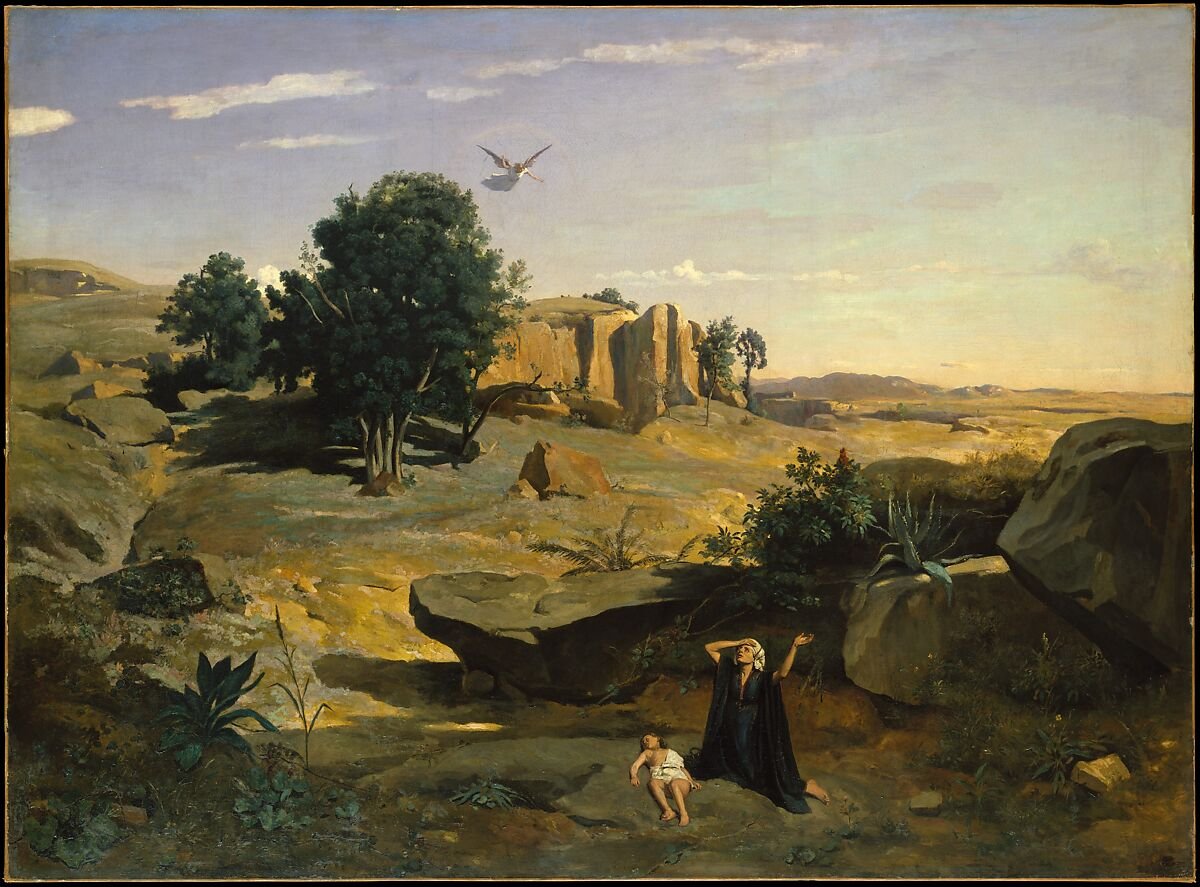
"Hagar in the Wilderness" by Camille Corot and "I Wonder What Will Happen to the Land" by Scott Momaday are two distinct works that diverge in style, medium, and cultural context but ultimately portray a connection of people and nature. Corot's "Hagar in the Wilderness," an 1835 painting, is a classic example of the 19th-century Barbizon school, associated with Romanticism, characterized by its portrayal of landscapes. Though the central theme of the artwork is a biblical narrative, depicting Hagar abandoned in the desert with her son Ishmael, this brief analysis focuses on the connection between Corot and Momaday in the theme of the earth and nature as a maternal figure. Corot uses soft, muted tones and a dreamlike atmosphere, emphasizing the emotional depth of Hagar's plight, the shade in the foreground acting as a haven for the mother and child. The painting's composition draws attention to the vast, barren landscape, evoking a sense of isolation and desolation. In the end, nature both gives and takes life.
In contrast, Scott Momaday's "I Wonder What Will Happen to the Land" is a more contemporary work, reflecting the artist's Native American heritage and connection to the land. Both Corot and Momaday evoke a sense of vastness in their worlds as if the land is never-ending but beautiful - “I exist in a landscape, and my existence is indivisible with the land.” Unlike Corot's romanticized scene, Momaday's work is a multi-dimensional exploration of identity, history, and the impact of cultural displacement.
While Corot's painting captures a specific moment in a biblical narrative with a focus on emotion and atmosphere, Momaday's piece engages with broader themes of heritage and land, addressing contemporary issues facing indigenous communities. The comparison highlights the diverse ways in which artists across different time periods and cultural backgrounds can express complex but converging narratives of nature through any medium.